Top 20 Best War Movies on Netflix Of All Time
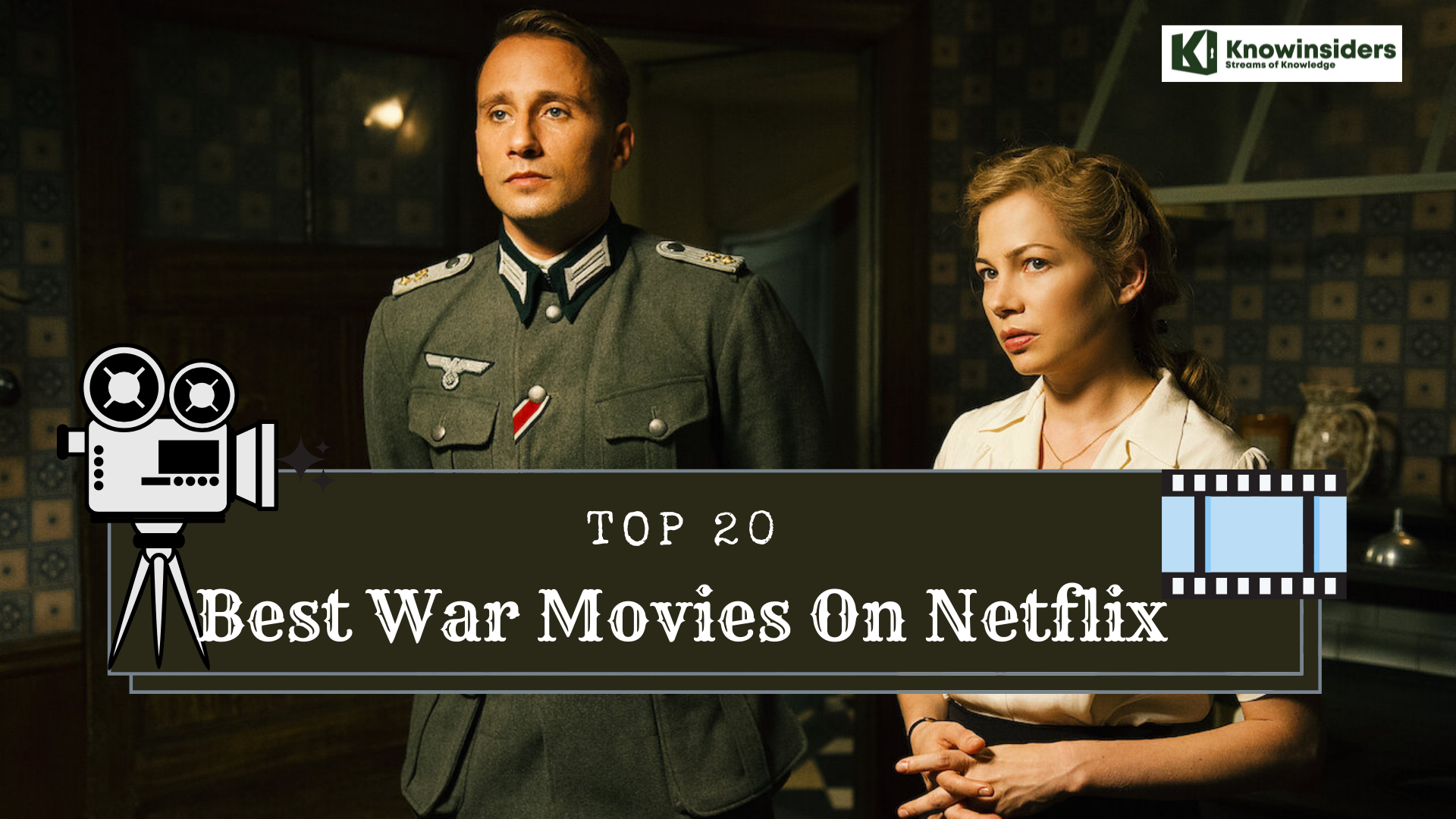 |
| Top 20 best war movies on Netflix |
War is hell—but war movies can be pretty damn entertaining. Some of the military films below make you reflect, some make you cry, and others will just plop you right in the middle of the action. But they have one thing in common: They're all available to stream on Netflix. So strap in, soldier, and get bingeing.
List of top 20 best war movies of all time
20. Suite Française
19. The Way Back
18. Fort Bliss
17. Spectral
16. Tropic Thunder
15. Atonement
14. Tell Spring Not to Come This Year
13. Flame & Citron
12. Inglourious Basterds
11. A War (2015)
10. Beasts of No Nation
9. The Longest Day
8. Downfall
7. Patton
6. Last Days in Vietnam
5. Full Metal Jacket
4. Schindler's List
3. Kilo Two Bravo
2. Lessons of Darkness
1. Sand Castle
Top 20 best war movies of all time
20. Suite Française
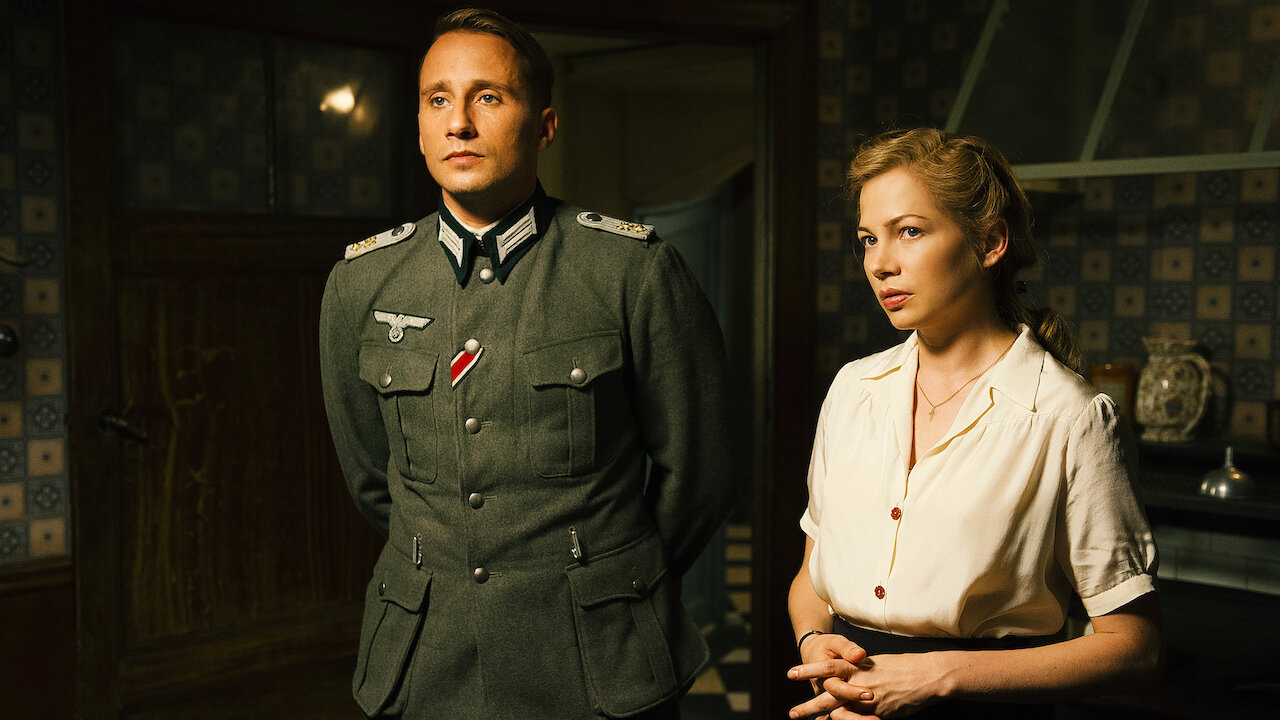 |
| Photo: Netflix |
Suite Française is a 2015 British-French-Belgian war romantic drama film directed by Saul Dibb and co-written with Matt Charman. It is based on the second part of Irène Némirovsky's 2004 novel of the same name. The film stars Michelle Williams, Kristin Scott Thomas, Matthias Schoenaerts, Sam Riley, Ruth Wilson, Lambert Wilson and Margot Robbie. It concerns a romance between a French villager and a German soldier during the early years of the German occupation of France. Suite Française was filmed on location in France and Belgium. It was released theatrically in the UK on 13 March 2015 and premiered in the US through Lifetime cable network on 22 May 2017.
Set during the early years of World War II and the Nazi occupation of France, this romantic war drama follows star-crossed lovers Lucile (Michelle Williams), a French villager, and German soldier Bruno von Falk (Matthias Schoenarts). While Lucile initially tries to resist her interest in Bruno because her husband is a prisoner of war, the close quarters soon lead them into a powerful romance as they cope with the ongoing devastation of the war.
19. The Way Back
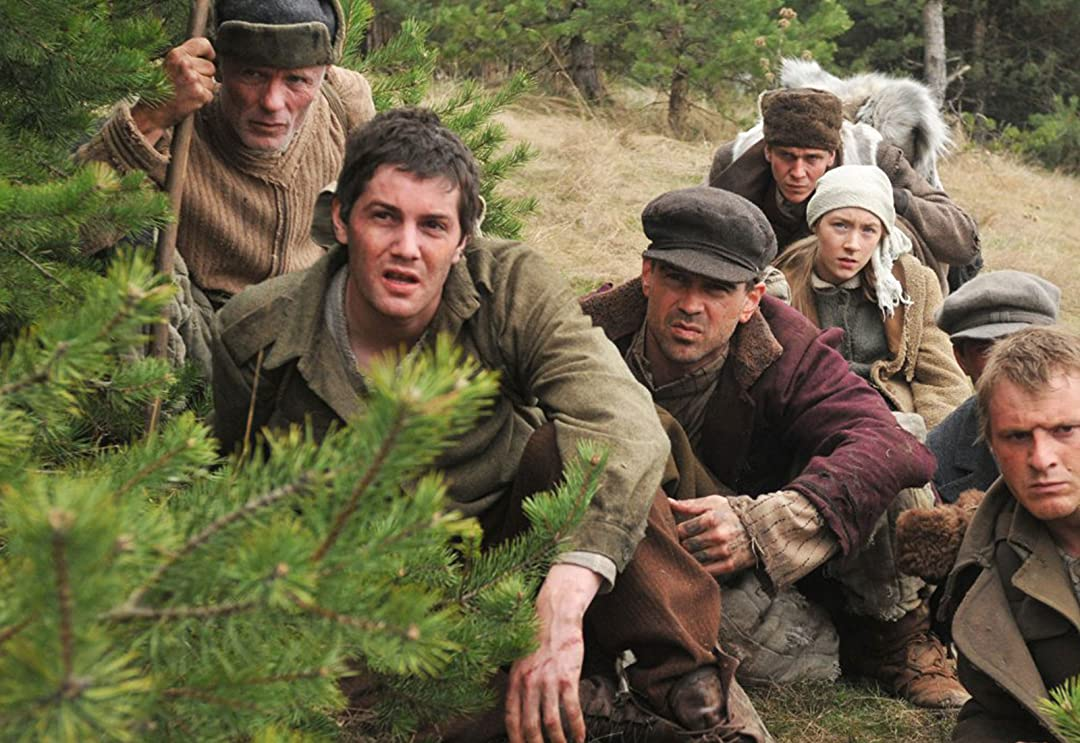 |
| Photo: Netflix |
The Way Back is a 2010 American survival film directed by Peter Weir, from a screenplay by Weir and Keith Clarke. The film is inspired by The Long Walk (1956), the memoir by former Polish prisoner of war Sławomir Rawicz, who claimed to have escaped from a Soviet Gulag and walked 4,000 miles (6,400 km) to freedom in World War II. The film stars Jim Sturgess, Colin Farrell, Ed Harris, and Saoirse Ronan, with Alexandru Potocean, Sebastian Urzendowsky, Gustaf Skarsgård, Dragoș Bucur and Mark Strong.
The film was nominated for an Oscar for Best Makeup, but lost to The Wolfman.
The film is loosely based on The Long Walk (1956), Sławomir Rawicz's memoir depicting his alleged escape from a Siberian Gulag and subsequent 4,000-mile walk to freedom in India. The book sold over 500,000 copies and is credited with inspiring many explorers. In 2006 the BBC unearthed records (including some written by Rawicz himself) which showed that, rather than having escaped from the gulag, he had in fact been released by the USSR in 1942. Nevertheless, there is some circumstantial evidence that some sort of trek to freedom occurred, via the route outlined in the book and film. Captain Rupert Mayne, a British intelligence officer in Calcutta in 1942, interviewed three emaciated men, who claimed to have escaped from Siberia. Mayne always believed their story was the same as that of The Long Walk. So the possibility remains that someone – even if not Rawicz – achieved this extraordinary feat. Though the director Peter Weir continues to claim that the so-called long walk happened, he himself now describes The Way Back as "essentially a fictional film".
18. Fort Bliss
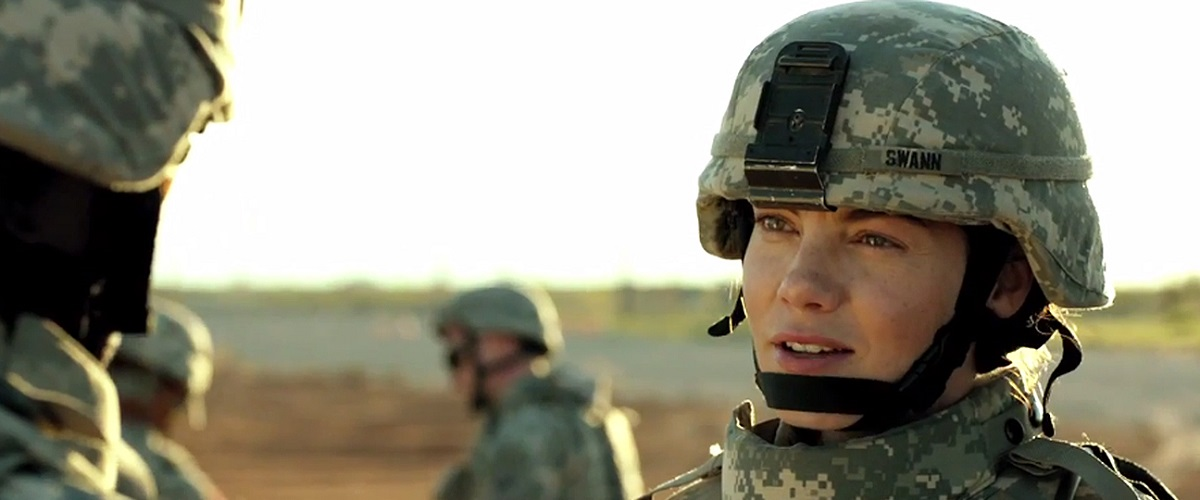 |
| Photo: Voltage Pictures |
The seemingly interminable conflict in Afghanistan having become America’s longest war, it’s hardly surprising that it (like the now-reviving Iraq War) has produced a spate of dramatic movies about its human costs for American soldiers. These generally break down into those that observe the action “in country” and others which chronicle the after-effects on returning soldiers. “Fort Bliss” starts out looking like the first type of movie but soon transforms into the second.
The tale opens in the heat of battle as a U.S. convoy is attacked while on a night mission and all hell breaks loose. In a chillingly gruesome scene, Army medic Maggie Swann (Monaghan) faces the task of extracting a large piece of ordnance from a badly wounded but still conscious soldier. Her cool expertise at performing this torturous action shows that she’s a battle-hardened pro. Fortunately for her, it’s her last day in Afghanistan. But next up, she’ll test the maxim that it’s harder going home than going to war.
Back in the U.S. at the eponymous fort, Maggie first has to deal with the extreme disaffection of her five-year-old son, Paul (Oakes Fegley), who during her latest tour of duty has been living with her ex-husband Richard (Ron Livingston) and his current wife. When Maggie comes to pick him up, the boy looks at her as if she’s a stranger and screams his head off as she takes away with her. While the strength of this antagonism stretches credulity somewhat (wouldn’t such distant parents be in constant touch with their kids by Skype?), the scenes between mother and son, which gradually grow warmer and more affectionate, convey the difficulties that long separations cause families.
17. Spectral
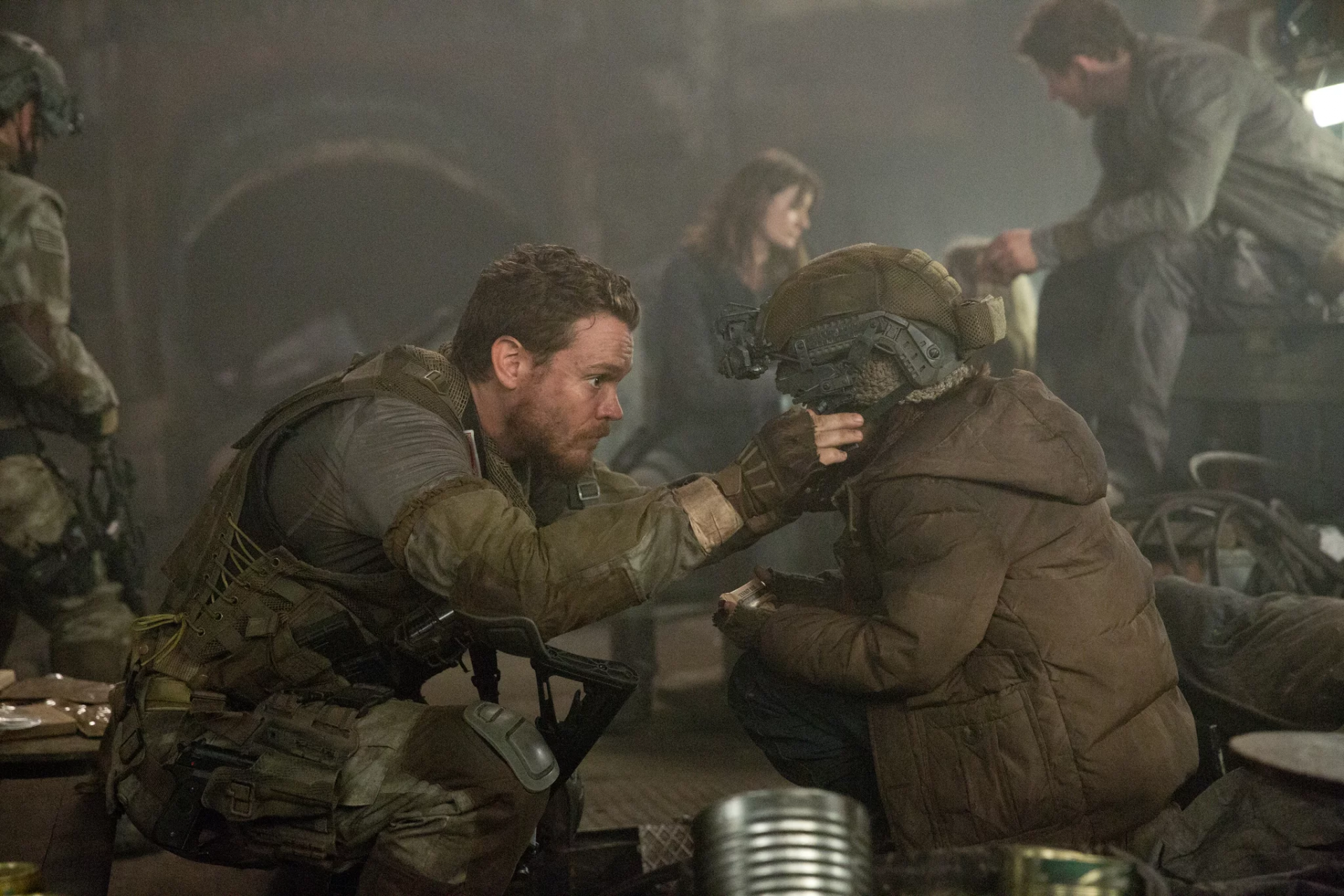 |
| Photo: Legendary Pictures |
Spectral is a 2016 American military science fiction action film directed by Nic Mathieu. The screenplay was written by Ian Fried, Mathieu and George Nolfi from a screen story by Fried. The film stars James Badge Dale, Max Martini, Emily Mortimer, and Bruce Greenwood. The film was released on December 9, 2016 on Netflix.
On February 1, 2017, Netflix released a prequel comic of the film called Spectral: Ghosts of War, made available digitally through the website ComiXology.
DARPA researcher Dr. Mark Clyne flies to Moldova from Virginia, the current deployment location of the US military in the ongoing Moldovan War, to be consulted on one of his creations, a line of hyperspectral imaging goggles that have been issued to troops there. After arriving at a US military airbase on the outskirts of Chișinău, he meets with US Army General Orland and CIA officer Fran Madison. They show him footage captured by the troops' goggles of a mysterious, translucent, humanoid apparition that kills almost instantaneously. Knowing it is not interference, Orland wants Clyne's expert opinion before forwarding the findings and footage to his superiors. Conversely, Madison believes the sightings to be members of the local insurgency wearing an advanced form of active camouflage and has orders from her superiors to retrieve a sample.
16. Tropic Thunder
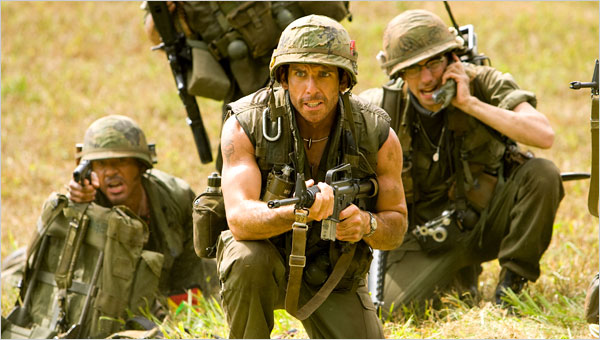 |
| Photo: Dream Works |
The documentary “Hearts of Darkness” is about the struggles of filming the great Vietnam war movie “Apocalypse Now.” Ben Stiller’s “Tropic Thunder” plays like that doc’s nightmare. A troupe of actors, under the impression they’re making a Vietnam war movie, wanders dangerously in the jungle and is captured by a gang of druglords who think the actors are narcs.
The movie is a send-up of Hollywood, actors, acting, agents, directors, writers, rappers, trailers and egos, much enhanced by several cameo roles, the best of which I will not even mention. You’ll know the one, although you may have to wait for the credits to figure it out.
All but stealing the show, Robert Downey Jr. is not merely funny but also very good and sometimes even subtle as Kirk Lazarus, an Australian actor who has won five Oscars and has surgically dyed his skin to transform himself into a black man. So committed is he to this role that he remains in character at all times, seemingly convinced that he is actually black.
This exasperates his fellow actor Alpa Chino (Brandon T. Jackson), a rapper who was born black and blasts Lazarus for his delusions. Alpa Chino (say it out loud) is like many rappers and promotes his own merchandise, notably Booty Sweat, an energy drink that keeps him going in the jungle. If Chino doesn’t buy the Lazarus performance, Lazarus is critical of Tugg Speedman (Stiller), who also starred in “Simple Jack,” a movie about a mentally challenged farmer who thinks animals can understand him.
15. Atonement
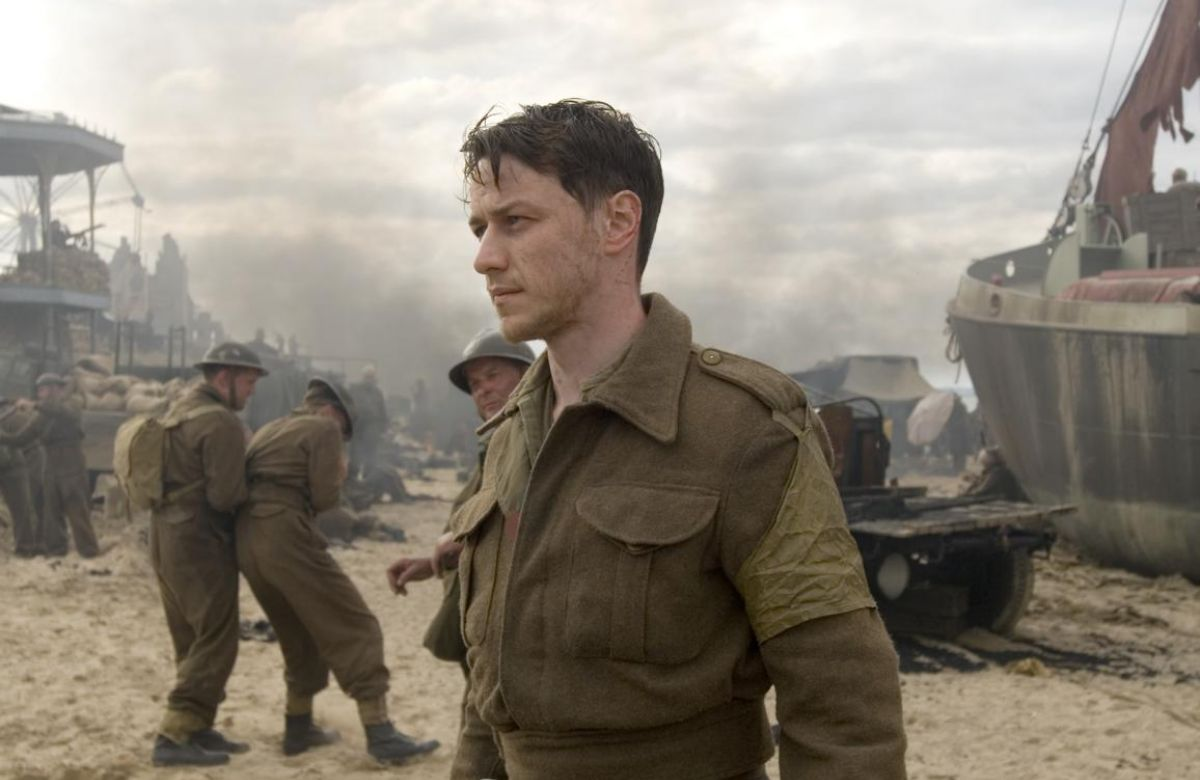 |
| Photo: European Film Awards |
"Atonement" begins on joyous gossamer wings, and descends into an abyss of tragedy and loss. Its opening scenes in an English country house between the wars are like a dream of elegance, and then a 13-year-old girl sees something she misunderstands, tells a lie and destroys all possibility of happiness in three lives, including her own.
The movie's opening act is like a breathless celebration of pure heedless joy, a demonstration of the theory that the pinnacle of human happiness was reached by life in an English country house between the wars. Of course that was more true of those upstairs than downstairs. We meet Cecilia Tallis (Keira Knightley), the bold, older daughter of an old family, and Robbie Turner (James McAvoy), their housekeeper's promising son, who is an Oxford graduate, thanks to the generosity of Cecilia's father. Despite their difference in social class, they are powerfully attracted to each other, and that leads to a charged erotic episode next to a fountain on the house lawn.
Each period and scene in the movie is compelling on its own terms, and then compelling on a deeper level as a playing out of the destiny that was sealed beside the fountain on that perfect summer's day. It is only at the end of the film, when Briony, now an aged novelist played by Vanessa Redgrave, reveals facts about the story that we realize how thoroughly, how stupidly, she has continued for a lifetime to betray Cecilia, Robbie and herself.
14. Tell Spring Not to Come This Year
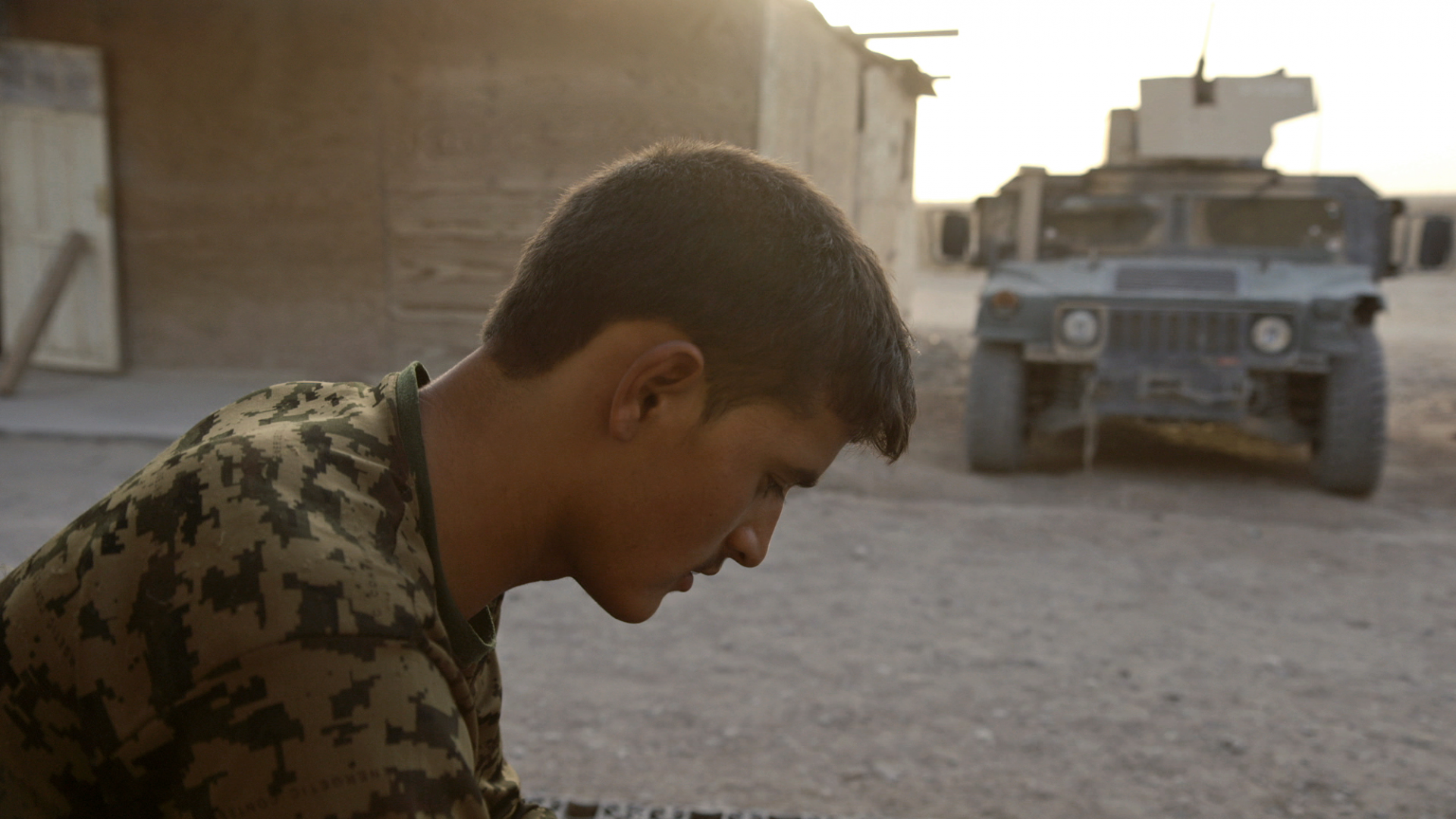 |
| Photo: NZIFF |
George W Bush’s notorious “Mission Accomplished” Iraq banner in 2003 is recalled by this excellent film about the tense aftermath of Nato’s withdrawal of forces from Afghanistan. It is an intimate documentary study of the Afghan national army, in whose hands the fight against the Taliban now rests – a tough, perceptive, beautifully photographed film, and something to set alongside Sebastian Junger’s great reportage documentary Restrepo (2010). That film could have been criticised for focusing on US soldiers’ experience at the expense of the Afghans. Not this one. With great complexity and subtlety, it shows that the Afghan soldiers’ experience does not simply duplicate that of the departed Americans. There is a new loneliness and grimness.
These soldiers have been left to prosecute a military campaign that could continue indefinitely – there is no meaningful “quagmire” issue for them – and for them it has the character of a civil war. Low on morale, and often unpaid, the soldiers have little to hearten them: except their religious faith, which the film discreetly asserts. It is incredible to think that there are young people in Afghanistan and elsewhere for whom 9/11 is a distant memory: the single act of terrorism which triggered this ongoing geopolitical upheaval. Tell Spring Not to Come This Year has urgency and power.
13. Flame & Citron
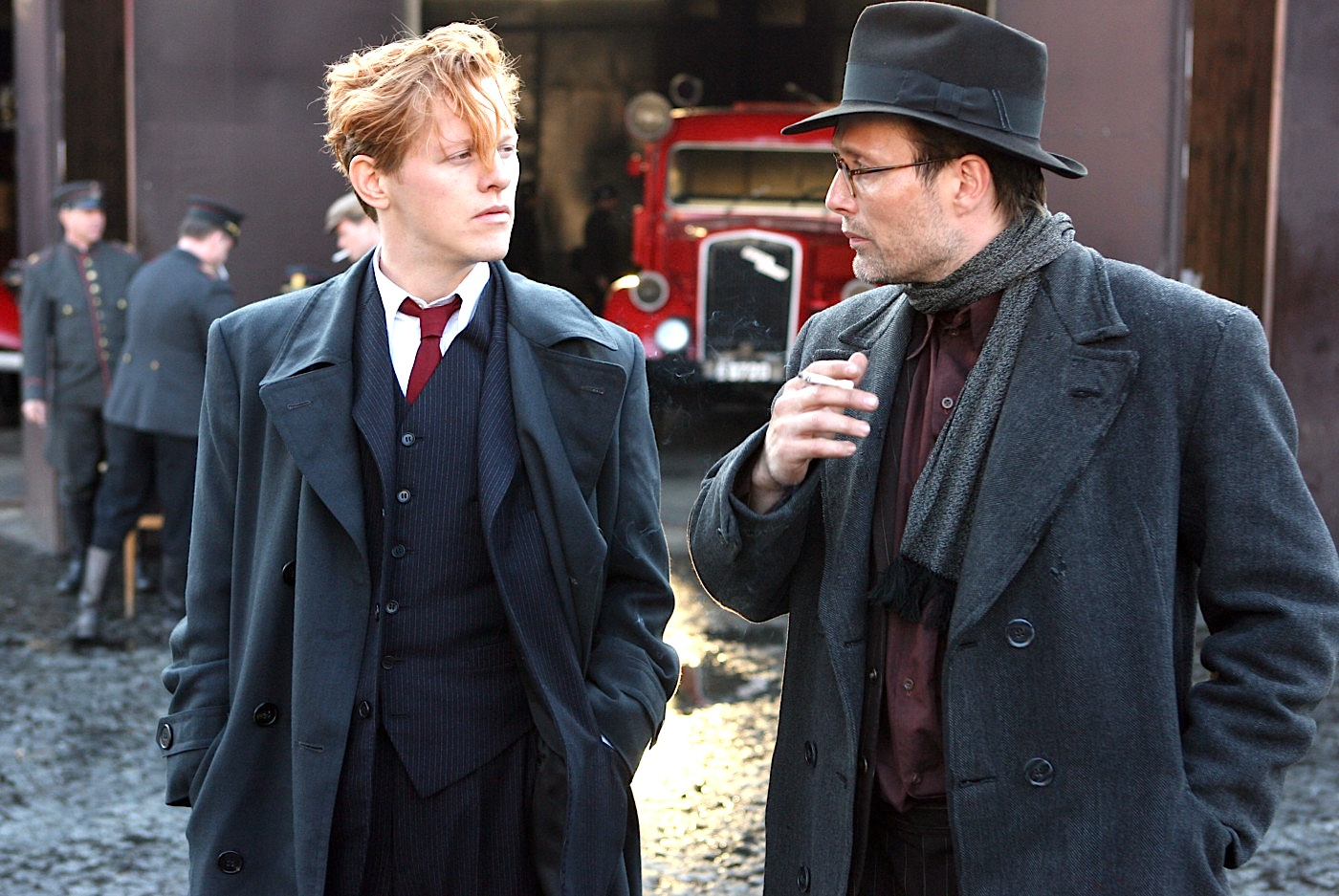 |
| Thure Lindhardt and Mads Mikkelsen as Flame and Citron. |
Murder takes an emotional toll, no matter how righteous the motivation. We might all be capable of pulling the trigger on Hitler, but would we reach the point when our willingness to kill others runs out? What if you’re a Danish Resistance fighter, executing your fellow countrymen who are Nazi collaborators? I suppose the purpose of war is to provide a reality in which killing is objectified.
“Flame & Citron” takes place in Copenhagen in 1944, as the approaching Nazi defeat looms ever more clearly. It involves a two-man Resistance hit squad: the red-headed Flame (Thure Lindhardt) and the inverted, nervous, sweaty Citron (Mads Mikkelsen, who played the Bond villain Le Chiffre in the 2006 “Casino Royale”). Flame is empowered by killing, even grows reckless with shadings of omnipotence. For Citron, their lives, lived always on the run and in hiding, gnaw at his soul. The more Flame takes bold chances, the more Citron feels dread.
12. Inglourious Basterds
 |
| Eli Roth and Brad Pitt are "Inglourious Basterds." |
Quentin Tarantino’s “Inglourious Basterds” is a big, bold, audacious war movie that will annoy some, startle others and demonstrate once again that he’s the real thing, a director of quixotic delights. For starters (and at this late stage after the premiere in May at Cannes, I don’t believe I’m spoiling anything), he provides World War II with a much-needed alternative ending. For once the basterds get what’s coming to them.
From the title, ripped off from a 1978 B-movie, to the Western sound of the Ennio Morricone opening music to the key location, a movie theater, the film embeds Tarantino’s love of the movies. The deep, rich colors of 35mm film provide tactile pleasure. A character at the beginning and end, not seen in between, brings the story full circle. The “basterds” themselves, savage fighters dropped behind Nazi lines, are an unmistakable nod to the Dirty Dozen.
And above all, there are three iconic characters, drawn broadly and with love: the Hero, the Nazi and the Girl. These three, played by Brad Pitt, Christoph Waltz and Melanie Laurent, are seen with that Tarantino knack of taking a character and making it a Character, definitive, larger than life, approaching satire in its intensity but not — quite — going that far. Let’s say they feel bigger than most of the people we meet in movies.
11. A War (2015)
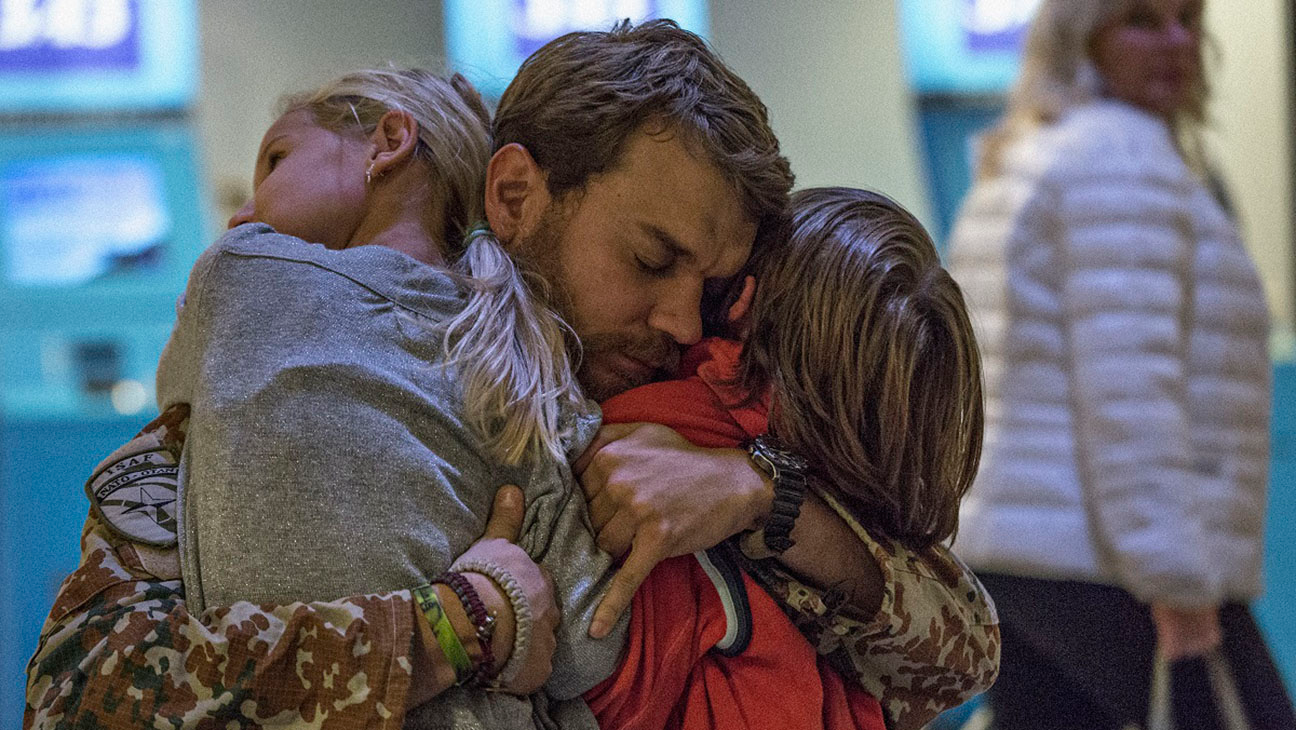 |
| COURTESY OF VENICE FILM FESTIVAL |
This Danish movie opens with a scene of high tension that soon situates the viewer exactly where he or she would never want to be. In Afghanistan, a group of Danish peacekeepers is scouring a patch of barren land, walking in a narrow, evenly-spaced line. The better not to get blown up by a land mine. Their work is methodical. The soldiers are in constant contact with their base, and its commanders and intel officers are providing calm, expert guidance. But of course something bad is going to happen. And something bad does happen, and the consequences weigh heavily on the commanding officer, Claus Pedersen. Out of a sense of guilt, and more overtly to make up for the absence of a shell-shocked soldier whom he’s decided to put on camp patrol, Pedersen begins accompanying his troops on their away-from-base rounds. He doesn’t know it, but he’s setting himself up for a fall.
Asbæk is such an appealing actor, and the smirks and pouts of the movie’s prosecuting magistrate Lisbeth Danning, played by Charlotte Munck, are portrayed as on the petulant side, but even here the movie maintains an even hand: her arguments are cogent, sane, humanitarian, not wrong. The quiet authority Lindholm brings to the portrayal of all the aspects of the story—the soldiering, the camaraderie, the domestic travails of Pedersen’s wife as she manages the mutating behaviors of their three young children, the bland yet imposing officiousness of the military tribunal—is exemplary, and puts me in mind of the definite but unimposing style of the Iranian filmmaker Asghar Farhadi, who deals with not entirely similar but nonetheless extremely fraught moral conundrums. “A War,” as tough to watch as it can be, is an extremely rewarding and disquieting experience.
10. Beasts of No Nation
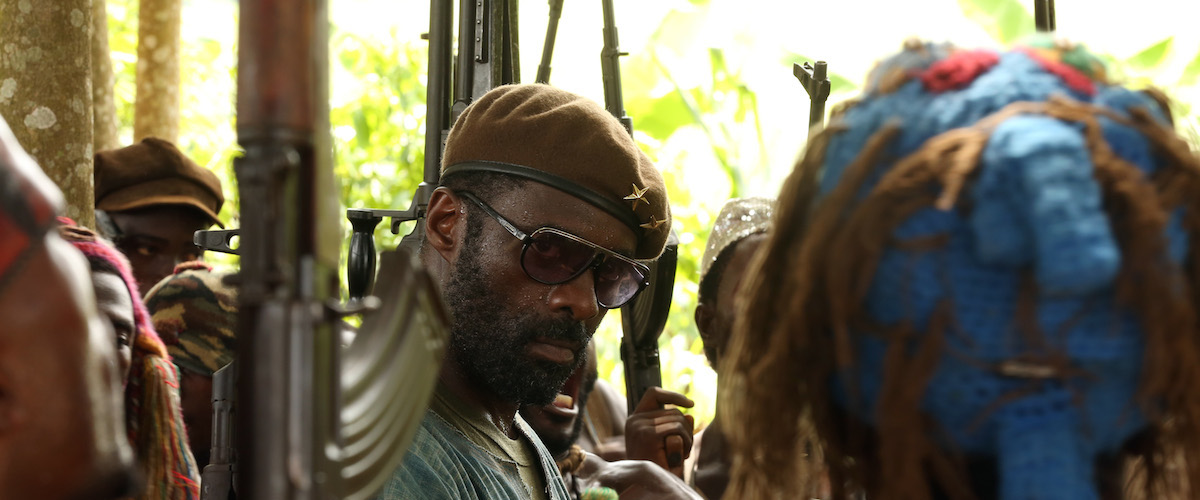 |
| Photo: Netflix |
The filmmaking craft of "Beasts of No Nation" is vividly apparent, and its emotional power is undeniable. Why, then, does it feel dubious in certain ways, and perhaps troubling for the wrong reasons?
The film's director, writer and cinematographer, Cary Joji Fukunaga, is a master of imaginative and dynamic images; he proved as much in "Sin Nombre," "Jane Eyre" and season one of "True Detective," and he proves it again in this bloody, despairing film about a child soldier in a nonexistent African country. Based on the same-titled novel by Uzodinma Iweala, a Nigerian doctor and sociologist who began the story as a thesis project at Harvard, the movie immediately puts us in the shoes (and sometimes bare feet) of its hero, eight year old Agu (Abraham Attah). He narrates parts of the movie in a mostly embittered but occasionally lyrical voice-over, telling us about his mother and father and siblings and the peaceful life they once enjoyed.
9. The Longest Day
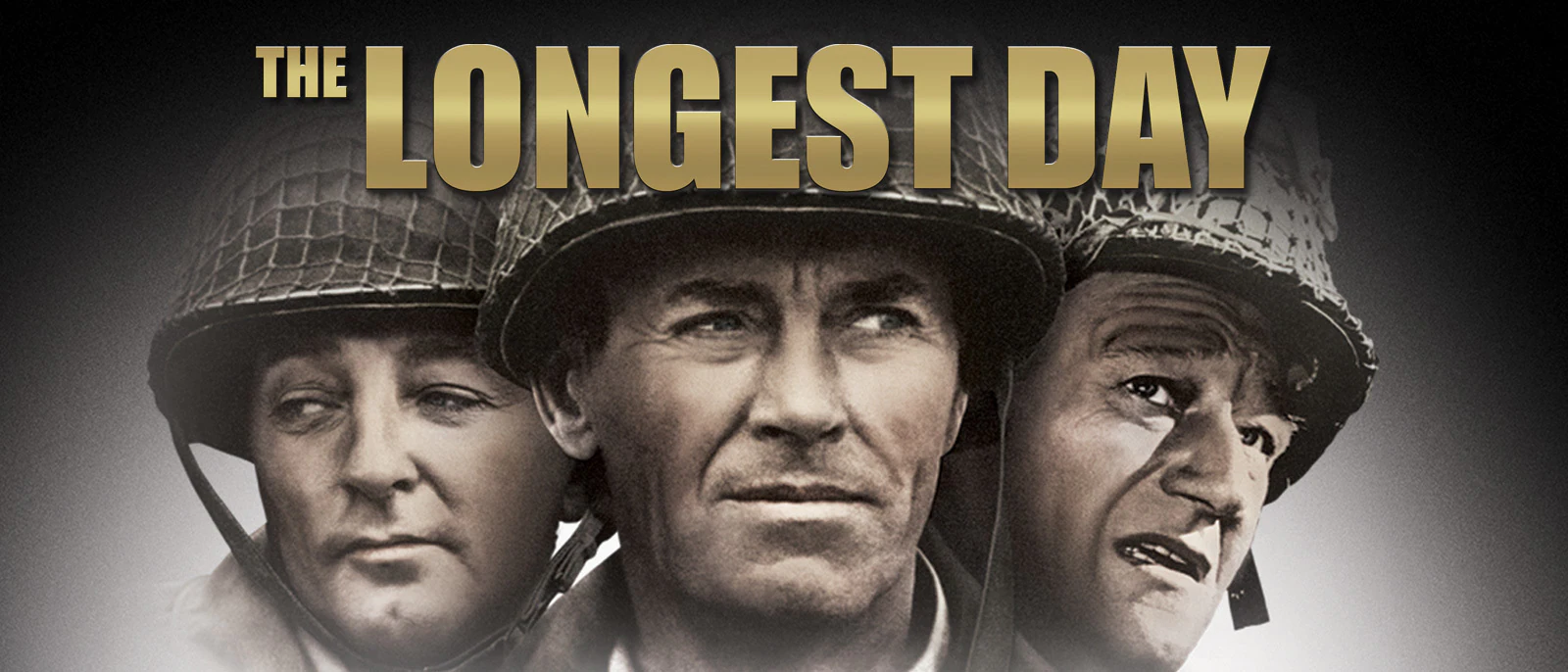 |
| Photo: 20th Century Studio |
The Longest Day is a 1962 American epic war film, shot in black and white and based on Cornelius Ryan's 1959 non-fiction book of the same name about the D-Day landings at Normandy on June 6, 1944. The film was produced by Darryl F. Zanuck, who paid author Ryan $175,000 for the film rights. The screenplay was by Ryan, with additional material written by Romain Gary, James Jones, David Pursall, and Jack Seddon. It was directed by Ken Annakin (British and French exteriors), Andrew Marton (American exteriors), and Bernhard Wicki (German scenes).
The Longest Day features a large international ensemble cast including John Wayne, Kenneth More, Richard Todd, Robert Mitchum, Richard Burton, Steve Forrest, Sean Connery, Henry Fonda, Red Buttons, Peter Lawford, Eddie Albert, Jeffrey Hunter, Stuart Whitman, Tom Tryon, Rod Steiger, Leo Genn, Gert Fröbe, Irina Demick, Bourvil, Curd Jürgens, George Segal, Robert Wagner, Paul Anka, and Arletty. Many of these actors played roles that were essentially cameo appearances. In addition, several cast members had seen action as servicemen during the war, including Albert, Fonda, Genn, More, Steiger, and Todd; Todd was among the first British officers to land in Normandy in Operation Overlord, and he participated in the assault on Pegasus Bridge.
The film employed several Axis and Allied military consultants who had been actual participants on D-Day, and many had their roles re-enacted in the film. These included Günther Blumentritt (a former German general), James M. Gavin (an American general), Frederick Morgan (Deputy Chief of Staff at SHAEF), John Howard (who led the airborne assault on the Pegasus Bridge), Lord Lovat (who commanded the 1st Special Service Brigade), Philippe Kieffer (who led his men in the assault on Ouistreham), Marie-Pierre Kœnig (who commanded the Free French Forces in the invasion), Max Pemsel (a German general), Werner Pluskat (the major who was the first German officer to see the invasion fleet), Josef "Pips" Priller (the hot-headed pilot), and Lucie Rommel (widow of Field Marshal Erwin Rommel).
The film won two Academy Awards and was nominated for three others.
8. Downfall
 |
| Bruno Ganz as Hitler with Juliane Köhler as Eva Braun in the 2004 film Downfall CONSTANTIN FILM |
"Downfall" takes place almost entirely inside the bunker beneath Berlin where Adolf Hitler and his inner circle spent their final days, and died. It ventures outside only to show the collapse of the Nazi defense of Berlin, the misery of the civilian population and the burning of the bodies of Hitler, Eva Braun, and Joseph and Magda Goebbels. For the rest, it occupies a labyrinth of concrete corridors, harshly lighted, with a constant passage back and forth of aides, servants, guards, family members and Hitler's dog, Blondi. I was reminded, oddly, of the claustrophobic sets built for "Das Boot," which took place mostly inside a Nazi submarine.
Our entry to this sealed world is Traudl Junge (Alexandra Maria Lara), hired by Hitler as a secretary in 1942 and eyewitness to Hitler's decay in body and mind. She wrote a memoir about her experiences, which is one of the sources of this film, and "Blind Spot" (2002) was a documentary about her memories. In a clip at the end of "Downfall," filmed shortly before her death, she says she now feels she should have known more than she did about the crimes of the Nazis. But like many secretaries the world over, she was awed by the power of her employer and not included in the information loop. Yet she could see, as anyone could see, that Hitler was a lunatic. Sometimes kind, sometimes considerate, sometimes screaming in fits of rage, but certainly cut loose from reality.
7. Patton
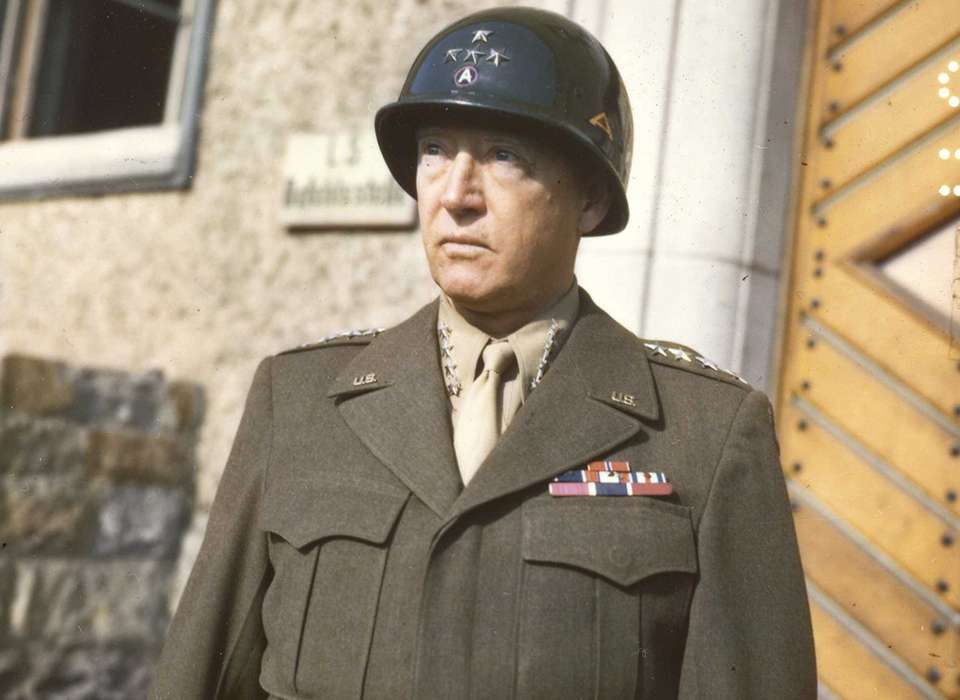 |
| Photo: Getty |
So speaks Gen. George S. Patton Jr. about war, in "Patton." In his words we hear a premonition of the most memorable of all war movie speeches, Col. Kilgore's "I love the smell of napalm in the morning," from "Apocalypse Now." It is surely no coincidence that both screenplays were co-written by Francis Ford Coppola. The Kilgore character seems like a screwball spin-off of Patton, a man who observes to his staff at the end of the war: "All good things must come to an end."
In his own eyes, Patton was larger than life and stood outside time. Standing on a North African battlefield where Carthage was attacked by Rome, he says "I was here," and he means it. He believes in reincarnation and destiny, and when he is benched on the eve of the invasion of Europe, he rants, "The last great opportunity of a lifetime and I'm left out of it? God will not allow it to happen." That swagger was his strength and weakness. He could inspire men to heroic feats, he was a brilliant strategist, but he was a genius at getting himself into trouble. In a war where millions died horribly, he slapped a shell-shocked soldier and his career was derailed.
Franklin J. Schaffner's "Patton" (1970), released at the height of the unpopular war in Vietnam, was described by many reviewers at the time as "really" an anti-war film. It was nothing of the kind. It was a hard-line glorification of the military ethic, personified by a man whose flaws and eccentricities marginalized him in peacetime, but found the ideal theater in battle. In this he was not unlike Churchill; both men used flamboyance, eccentricity and a gift for self-publicity as a way of inspiring their followers and perplexing the enemy. That Patton was in some ways mad is not in doubt--at least to the makers of this film--but his accomplishments overshadowed, even humiliated, his cautious and sane British rival, Montgomery.
6. Last Days in Vietnam
 |
| Photo: Netflix |
Riveting, wrenching and extraordinarily important, Rory Kennedy’s superb documentary “Last Days in Vietnam” is effectively two films at once. One takes place nearly 40 years ago and tells the incredibly dramatic story of Americans’ frantic, chaotic evacuation of South Vietnam as Communist forces closed in on Saigon. The other film is that same story refracted through our awareness of the potential parallels between yesterday’s debacle and similar U.S. withdrawals from Iraq and Afghanistan today.
One surprising thing about the film is how unfamiliar its story will be for many Americans. For younger viewers, that’s more understandable. But this reviewer was an avid news watcher throughout the period covered and yet came out of Kennedy’s film wondering, “Why did I not know more about all this?”
One reason, of course, is that the collapse of South Vietnam two years after most U.S. troops were withdrawn was so abrupt and chaotic that it came across mostly as inchoate geopolitical spasms on the evening news. There was no lucid, overarching narrative of the kind Kennedy is able to provide in retrospect. Another reason, though, is that by 1975 Americans were so sick of the Vietnam War, which had divided the country into bitterly opposed camps for years, they simply wanted to look away. In doing so, they exacerbated a tragedy they had helped create.
5. Full Metal Jacket
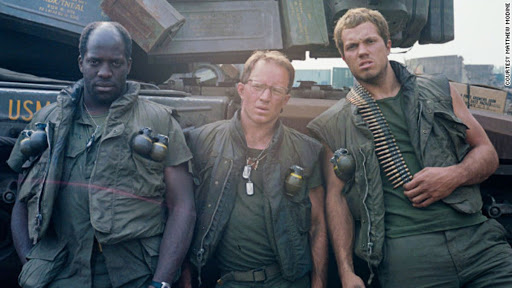 |
| Photo: Warner Bros. |
Stanley Kubrick's "Full Metal Jacket" is more like a book of short stories than a novel. Many of the passages seem self-contained, some of them are masterful and others look like they came out of the bottom drawer. This is a strangely shapeless film from the man whose work usually imposes a ferociously consistent vision on his material.
The movie is about Vietnam and was shot on stages and outdoor sets in England. It's one of the best-looking war movies ever made on sets and stages, but that's not good enough when compared to the awesome reality of "Platoon," "Apocalypse Now" and "The Deer Hunter." The crucial last passages of the film too often look and feel like World War II films from Hollywood studios. We see the same sets from so many different angles that after the movie we could find our own way around Kubrick's Vietnam.
4. Schindler's List
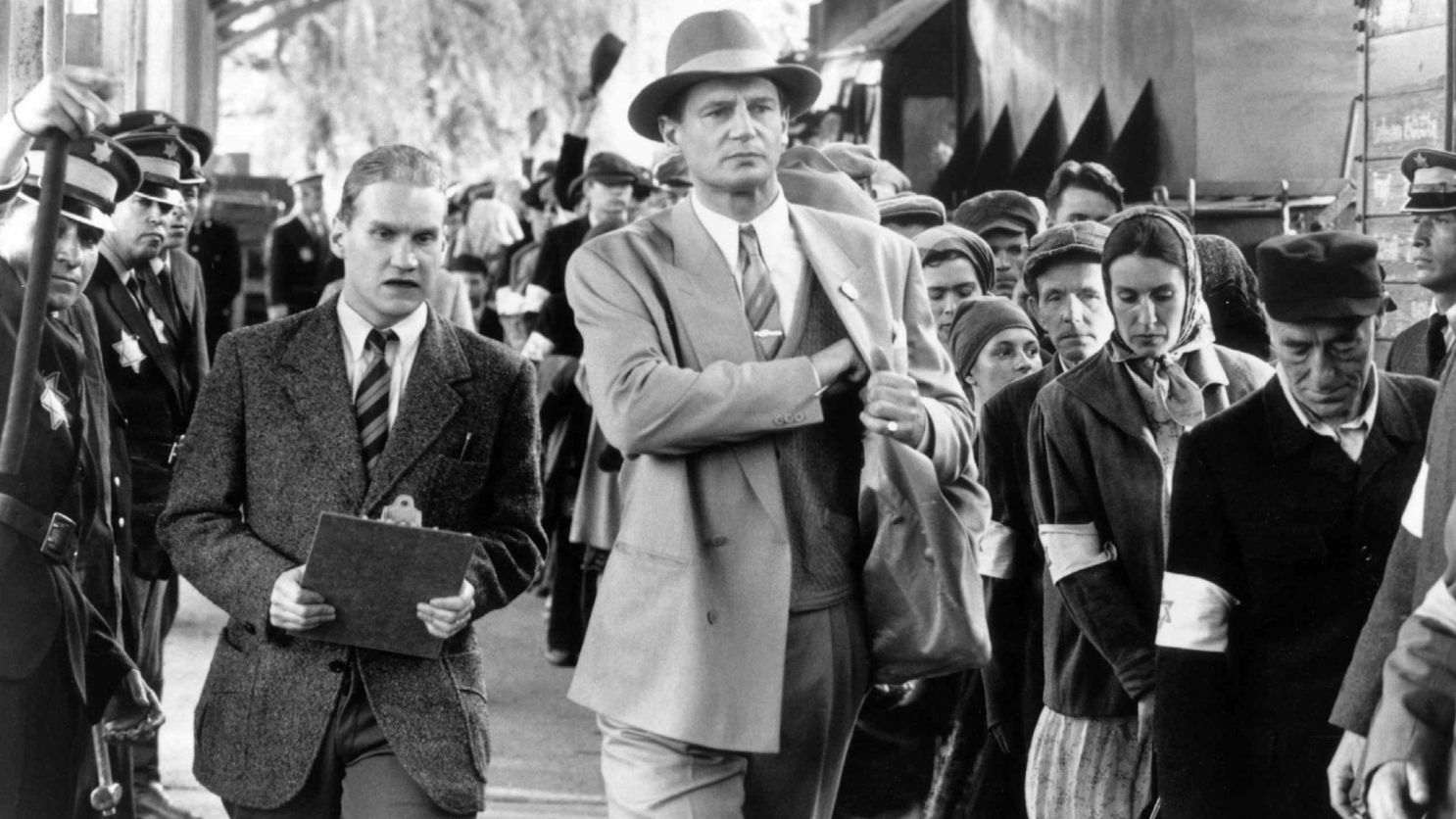 |
| Photo: Universal Pictures |
Schindler's List is a 1993 American epic historical drama film directed and produced by Steven Spielberg and written by Steven Zaillian. It is based on the 1982 historical fiction novel Schindler's Ark by Australian novelist Thomas Keneally. The film follows Oskar Schindler, a German industrialist who together with his wife Emilie Schindler saved more than a thousand mostly Polish-Jewish refugees from the Holocaust by employing them in his factories during World War II. It stars Liam Neeson as Schindler, Ralph Fiennes as SS officer Amon Göth and Ben Kingsley as Schindler's Jewish accountant Itzhak Stern.
Ideas for a film about the Schindlerjuden (Schindler Jews) were proposed as early as 1963. Poldek Pfefferberg, one of the Schindlerjuden, made it his life's mission to tell Schindler's story. Spielberg became interested when executive Sidney Sheinberg sent him a book review of Schindler's Ark. Universal Pictures bought the rights to the novel, but Spielberg, unsure if he was ready to make a film about the Holocaust, tried to pass the project to several directors before deciding to direct it.
Principal photography took place in Kraków, Poland, over 72 days in 1993. Spielberg shot in black and white and approached the film as a documentary. Cinematographer Janusz Kamiński wanted to create a sense of timelessness. John Williams composed the score, and violinist Itzhak Perlman performed the main theme.
3. Kilo Two Bravo
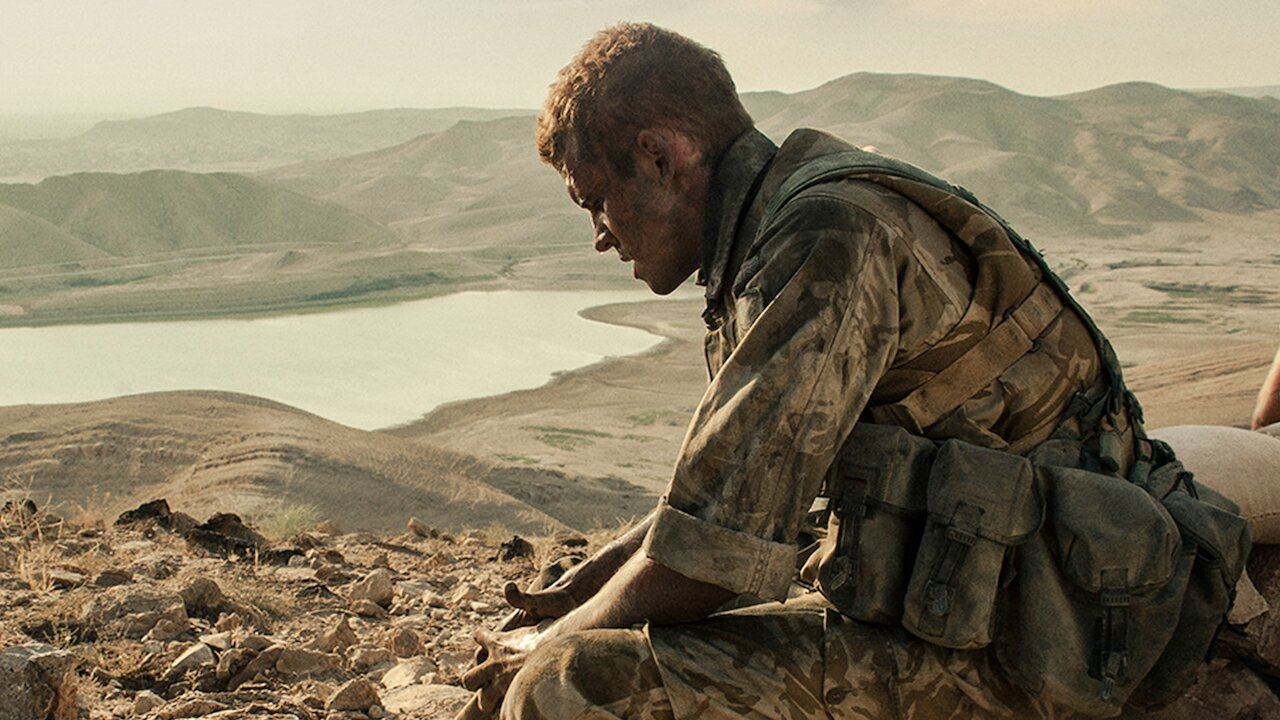 |
| Photo: Netflix |
Kajaki: The True Story, released in North America as Kilo Two Bravo, is a 2014 British war docu-drama film directed by Paul Katis in his feature debut, written by Tom Williams, and produced by Katis and Andrew de Lotbiniere.
The plot is based on the Kajaki Dam incident, involving Mark Wright and a small unit of British soldiers positioned near the Kajaki Dam, in Helmand province, Afghanistan.
Set in 2006 in Kajaki Dam, Afghanistan, this incredible drama follows three soldiers as they set off to engage the Taliban and encounter a deadly, unpredictable mine field on their journey. Suspenseful, moving, and frankly disturbing, this portrait of the horrors of war is unlike anything you've ever seen.
2. Lessons of Darkness
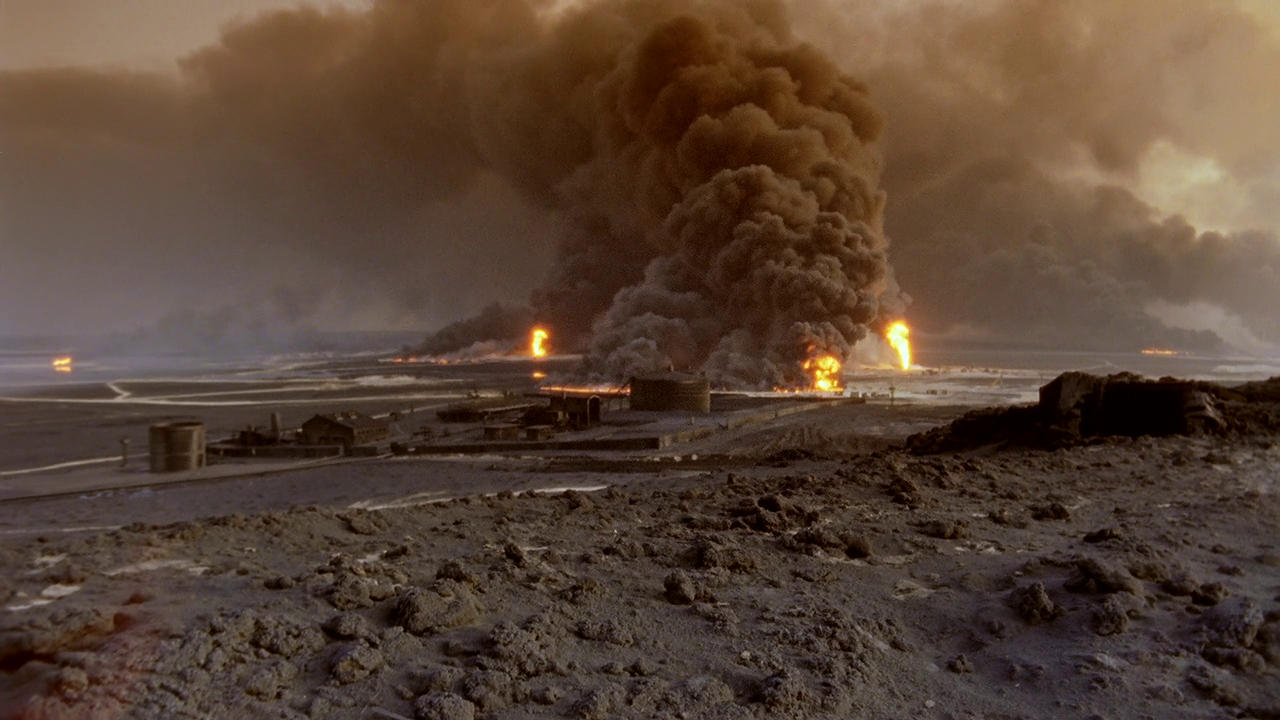 |
| Photo: Netflix |
Lessons of Darkness (German: Lektionen in Finsternis) is a 1992 film by director Werner Herzog. Shot in documentary style on 16mm film from the perspective of an almost alien observer, the film is an exploration of the ravaged oil fields of post-Gulf War Kuwait, decontextualised and characterised in such a way as to emphasise the terrain's cataclysmic strangeness. An effective companion to his earlier film Fata Morgana, Herzog again perceives the desert as a landscape with its own voice.
A co-production with Paul Berriff, the film was financed by the television studios Canal+ and Première.
The film is a meditation on catastrophe, contextualised through the literary modes of religion and science fiction. It begins with a quotation, attributed to Blaise Pascal: "The collapse of the stellar universe will occur – like creation – in grandiose splendor." This attribution is apocryphal, as the text was in fact written by Herzog for the film and chosen, like the music, to give the film a certain mood. The prologue of the quotation is followed by thirteen sections, denoted by numbered title cards: "A Capital City", "The War", "After the Battle", "Finds from Torture Chambers", "Satan's National Park", "Childhood", "And a Smoke Arose like a Smoke from a Furnace", "A Pilgrimage", "Dinosaurs on the Go", "Protuberances", "The Drying Up of the Source", "Life Without the Fire" and "I am so tired of sighing; Lord, let it be night".
1. Sand Castle
 |
| Photo: Netflix |
Sand Castle is a 2017 American war drama film directed by Fernando Coimbra and written by Chris Roessner. The film stars Nicholas Hoult, Henry Cavill, Logan Marshall-Green, Tommy Flanagan, Glen Powell, Beau Knapp, and Neil Brown Jr. The film centers on Matt Ocre, a young soldier in the United States Army, who is tasked with restoring water to a village in Iraq. It is based on the true events and the experience of the film's writer Roessner during the Iraq War. It was released on April 21, 2017 on Netflix.
The most interesting thing about “Sand Castle” is when it takes place. Its protagonist, Private Matt Ocre (Nicholas Hoult) enlisted in the reserves to help pay for college … in July 2001. Of course, two months later, the world changed. The film opens with an Ocre so desperate to get out of combat that he slams his hand in a car door. It doesn’t work. He’s quickly dispatched to Baghdad, where we meet this film’s cast of military characters, led by the tough but rational Sgt. Harper (Logan Marshall-Green).
The young cast of “Sand Castle” delivers a mixed bag of performances. Hoult is one of those actors who needs a strong director to bring out his best work and Coimbra doesn’t seem able to do that. He’s too flat and uninteresting as a protagonist. His most interesting scene is his first, when he slams his hand in the Humvee door. After that, we don’t really get to know him the way we need to. Far more interesting is Marshall-Green as the more resilient and experienced soldier. He’s a very intriguing young actor who I hope to see more of soon. As for Henry Cavill, first surprising in a buzz cut and beard, he barely makes an impact, which has kind of become his norm. Better in the supporting cast are a slightly unhinged Glen Powell ("Everybody Wants Some!!") and a practical Parker Sawyers (“Southside with You”).
 Top 30 Best Movies On Netflix of All Time Top 30 Best Movies On Netflix of All Time You are bored staying at home, and do not know what to watch? Here is the list of 30 best movies on Netflix that you ... |
 Netflix in July 2021 -The Full List Movies and Shows Netflix in July 2021 -The Full List Movies and Shows There will be plenty of new movies and original series coming on Netflix in this July. Below is the list of all movies and shows ... |
 Best Movies Coming In June on Netflix, Amazon Prime, HBO Max, Criterion Channel and More Best Movies Coming In June on Netflix, Amazon Prime, HBO Max, Criterion Channel and More This article will provide you a list of new movies coming to streaming platforms in June 2021. Check out ... |
 Top 10 Most-Watched Movies on Netflix in History Top 10 Most-Watched Movies on Netflix in History In this article, we provide you a list of ten most-watched movies ever on Netflix. You can not miss it! |


























